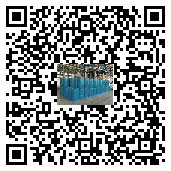Advantages of UV Viscosity-Reducing Dispersants
I. Environmental Synergy: Strengthening UV Technology's Green DNA
UV curing technology is renowned for its zero volatile organic compound (VOC) emissions and low energy consumption.
UV viscosity-reducing dispersants further amplify these environmental advantages. By optimizing the dispersion efficiency
of pigments and fillers, they significantly increase solids content without increasing system viscosity, reducing reliance on
diluent monomers and thus lowering potential environmental impact from the very beginning of the formulation.
Importantly, these dispersants are typically solvent-free polymers that introduce no additional VOCs, perfectly complying
with environmental regulations in industries like furniture and printing, and becoming a key supporter of UV technology's
commitment to "low-carbon production."
II. Core Breakthrough: Dual Guarantee of Efficient Viscosity Reduction and Long-Term Stability
Due to the low molecular weight of resins and monomers in UV systems, pigment particles are prone to agglomeration,
leading to a surge in viscosity. UV viscosity-reducing dispersants achieve this key breakthrough through three mechanisms:
First, pigment-affinity groups within the molecule precisely adsorb to the particle surface, displacing air and moisture for
thorough wetting;
second, the polymer chain segments form a steric barrier, acting like an "elastic buffer layer" to prevent
particle collision and adhesion;
and third, some models utilize charge repulsion to create an "electrostatic shield," further
enhancing dispersion stability. This synergistic effect not only reduces system viscosity by over 30% but also ensures
long-term storage stability—even in high-temperature environments, it prevents pigment sedimentation and coarsening,
resolving the "storage failure" pain point of UV coatings and inks.
III. Application Compatibility: Process Flexibility to Adapt to Diverse Applications
Different UV applications have significantly varying application performance requirements, and UV viscosity-reducing
dispersants demonstrate exceptional adaptability. In matte coatings, it efficiently disperses high levels of matting agent,
reducing viscosity to ensure leveling while evenly orienting the matting agent, achieving ultra-low gloss results below
1 dpi. In inkjet printing, its excellent viscosity reduction ensures smooth ink flow through the printhead, preventing
clogging while maintaining a narrow particle size distribution and guaranteeing printing accuracy. For industrial
protective coatings, it is compatible with various application methods, such as roller coating and curtain coating,
allowing for variable film thicknesses through viscosity adjustment. After curing, it maintains the coating's water
and salt spray resistance.
IV. Performance Upgrade: Enabling a Leap in End-Product Quality
The value of UV viscosity-reducing dispersants lies not only in optimizing the process but also in improving results.
In terms of color performance, it enables precise dispersion of organic pigments, carbon black, and other materials,
significantly improving tinting strength and color purity, and avoiding color spots and color variations in printed
products. By eliminating light scattering caused by pigment agglomeration, it can simultaneously enhance gloss
and transparency, or achieve a uniform and delicate matte finish. In terms of physical properties, evenly dispersed
pigment particles create a denser coating structure, enhancing abrasion and weather resistance after curing, and
extending product life. Some dispersants can also synergize with light stabilizers to introduce stabilizing groups
into the film layer, further enhancing anti-aging properties.
V. Economic Value: Cost Optimization Across the Entire Supply Chain
From production to application, UV viscosity-reducing dispersants can generate significant economic value. In
the preparation process, it shortens grinding time by quickly breaking down pigment agglomerates, reducing
equipment energy consumption and labor. In the formulation process, its high dispersion efficiency means that
less pigment is needed to achieve the target tinting strength, reducing raw material costs. In storage, its
long-term stability reduces waste loss due to settling. In application, its smooth rheological properties reduce
equipment wear and tear and minimize downtime and cleaning. This dual effect of "cost reduction and efficiency
improvement" makes it a key additive for controlling overall costs in the UV industry.
Conclusion: The "Invisible Engine" of UV Technology Advancement
Driven by the dual demands of stricter environmental regulations and rising quality requirements, UV
viscosity-reducing dispersants have evolved from "optional additives" to "core components." With environmental
synergy as the foundation, viscosity reduction and stability as the core, process adaptability as the link, and
performance upgrades as the goal, they fully unlock the application potential of UV systems. From home wood
products to industrial protection, from fine printing to 3D printing, this "small additive" is driving UV technology's
continued advancement on the path of green transformation and quality upgrades with its multiple advantages.


